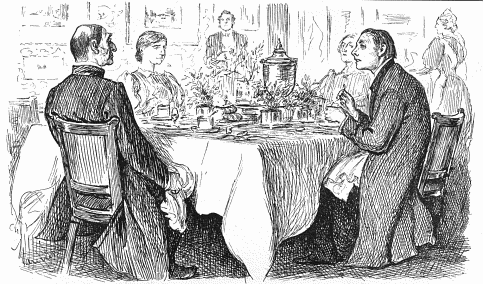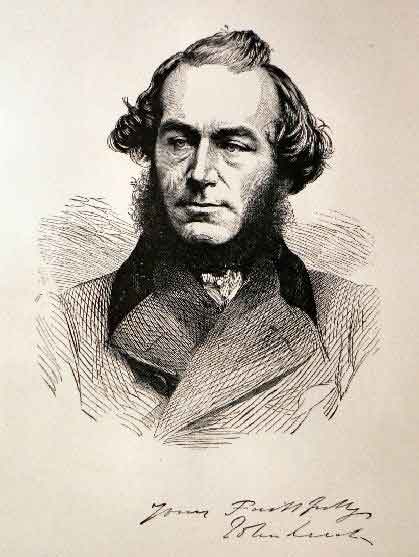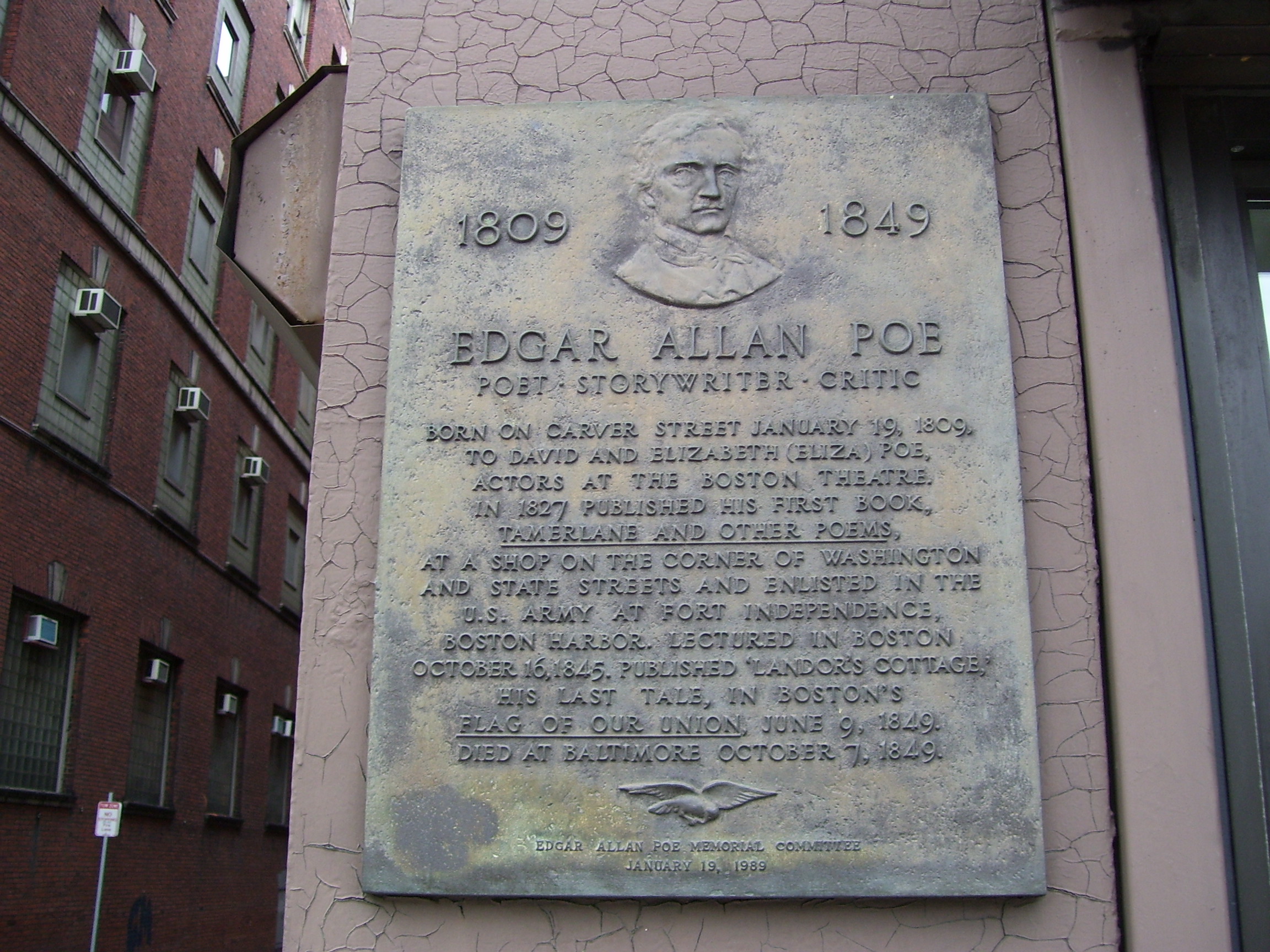|
Bentley's Miscellany
''Bentley's Miscellany'' was an English literary magazine started by Richard Bentley. It was published between 1836 and 1868. Contributors Already a successful publisher of novels, Bentley began the journal in 1836 and invited Charles Dickens to be its first editor. Dickens serialised his second novel ''Oliver Twist'', but soon fell out with Bentley over editorial control, calling him a "Burlington Street Brigand". He resigned as editor in 1839 and William Harrison Ainsworth took over. Ainsworth would also only stay in the job for three years, but bought the magazine from Bentley a decade later. In 1868 Ainsworth sold the magazine back to Bentley, who merged it with the '' Temple Bar Magazine''. Aside from the works of Dickens and Ainsworth other significant authors published in the magazine included: Wilkie Collins, Catharine Sedgwick, Richard Brinsley Peake, Thomas Moore, Thomas Love Peacock, William Mudford, Mrs Henry Wood, Charles Robert Forrester (sometimes under the pse ... [...More Info...] [...Related Items...] OR: [Wikipedia] [Google] [Baidu] |
William Harrison Ainsworth
William Harrison Ainsworth (4 February 18053 January 1882) was an English historical novelist born at King Street in Manchester. He trained as a lawyer, but the legal profession held no attraction for him. While completing his legal studies in London he met the publisher John Ebers, at that time manager of the King's Theatre, Haymarket. Ebers introduced Ainsworth to literary and dramatic circles, and to his daughter, who became Ainsworth's wife. Ainsworth briefly tried the publishing business, but soon gave it up and devoted himself to journalism and literature. His first success as a writer came with '' Rookwood'' in 1834, which features Dick Turpin as its leading character. A stream of 39 novels followed, the last of which appeared in 1881. Ainsworth died in Reigate on 3 January 1882, and was buried in Kensal Green Cemetery. Biography Early life Ainsworth was born on 4 February 1805 in the family house at 21 King Street, Manchester, to Thomas Ainsworth, a prominent ... [...More Info...] [...Related Items...] OR: [Wikipedia] [Google] [Baidu] |
William Mudford
William Mudford (8 January 1782 – 10 March 1848) was a British writer, essayist, translator of literary works and journalist. He also wrote critical and philosophical essays and reviews. His 1829 novel ''The Five Nights of St. Albans: A Romance of the Sixteenth Century'' received a good review from John Gibson Lockhart, an achievement which was considered a rare distinction. Mudford also published short fictional stories which were featured in periodicals such as ''Blackwood's Edinburgh Magazine'', ''Fraser's Magazine'', and '' Bentley's Miscellany''. His short story " The Iron Shroud", about an iron torture chamber which shrinks through mechanical action and eventually crushes the victim inside, was first published in August 1830 by ''Blackwood's Edinburgh Magazine'', and later republished separately in 1839 and 1840 with the subtitle ''"Italian Revenge"''. Edgar Allan Poe is considered to have been influenced by "The Iron Shroud" when he wrote " The Pit and the Pendulum" havin ... [...More Info...] [...Related Items...] OR: [Wikipedia] [Google] [Baidu] |
Magazines Disestablished In 1868
A magazine is a periodical publication, generally published on a regular schedule (often weekly or monthly), containing a variety of content. They are generally financed by advertising, purchase price, prepaid subscriptions, or by a combination of the three. Definition In the technical sense a '' journal'' has continuous pagination throughout a volume. Thus ''Business Week'', which starts each issue anew with page one, is a magazine, but the ''Journal of Business Communication'', which continues the same sequence of pagination throughout the coterminous year, is a journal. Some professional or trade publications are also peer-reviewed, for example the '' Journal of Accountancy''. Non-peer-reviewed academic or professional publications are generally ''professional magazines''. That a publication calls itself a ''journal'' does not make it a journal in the technical sense; '' The Wall Street Journal'' is actually a newspaper. Etymology The word "magazine" derives from Arabic ... [...More Info...] [...Related Items...] OR: [Wikipedia] [Google] [Baidu] |
Defunct Literary Magazines Published In The United Kingdom
{{Disambiguation ...
Defunct (no longer in use or active) may refer to: * ''Defunct'' (video game), 2014 * Zombie process or defunct process, in Unix-like operating systems See also * * :Former entities * End-of-life product * Obsolescence Obsolescence is the state of being which occurs when an object, service, or practice is no longer maintained or required even though it may still be in good working order. It usually happens when something that is more efficient or less risky r ... [...More Info...] [...Related Items...] OR: [Wikipedia] [Google] [Baidu] |
Punch (magazine)
''Punch, or The London Charivari'' was a British weekly magazine of humour and satire established in 1841 by Henry Mayhew and wood-engraver Ebenezer Landells. Historically, it was most influential in the 1840s and 1850s, when it helped to coin the term " cartoon" in its modern sense as a humorous illustration. From 1850, John Tenniel was the chief cartoon artist at the magazine for over 50 years. After the 1940s, when its circulation peaked, it went into a long decline, closing in 1992. It was revived in 1996, but closed again in 2002. History ''Punch'' was founded on 17 July 1841 by Henry Mayhew and wood-engraver Ebenezer Landells, on an initial investment of £25. It was jointly edited by Mayhew and Mark Lemon. It was subtitled ''The London Charivari'' in homage to Charles Philipon's French satirical humour magazine '' Le Charivari''. Reflecting their satiric and humorous intent, the two editors took for their name and masthead the anarchic glove puppet, Mr. Punch, o ... [...More Info...] [...Related Items...] OR: [Wikipedia] [Google] [Baidu] |
John Leech (caricaturist)
John Leech (29 August 1817 – 29 October 1864) was a British caricaturist and illustrator. He was best known for his work for ''Punch'', a humorous magazine for a broad middle-class audience, combining verbal and graphic political satire with light social comedy. Leech catered to contemporary prejudices, such as anti-Americanism and antisemitism and supported acceptable social reforms. Leech's critical yet humorous cartoons on the Crimean War helped shape public attitudes toward heroism, warfare, and Britons' role in the world. Leech also enjoys fame as the first illustrator of Charles Dickens' 1843 novella '' A Christmas Carol''. He was furthermore a pioneer in comics, creating the recurring character ''Mr. Briggs'' and some sequential illustrated gags. Early life John Leech was born in London. His father, a native of Ireland, was the landlord of the London Coffee House on Ludgate Hill, "a man", on the testimony of those who knew him, "of fine culture, a profound Shake ... [...More Info...] [...Related Items...] OR: [Wikipedia] [Google] [Baidu] |
George Cruikshank
George Cruikshank (27 September 1792 – 1 February 1878) was a British caricaturist and book illustrator, praised as the "modern William Hogarth, Hogarth" during his life. His book illustrations for his friend Charles Dickens, and many other authors, reached an international audience. Early life Cruikshank was born in London. His father, Edinburgh-born Isaac Cruikshank, was one of the leading caricaturists of the late 1790s and Cruikshank started his career as his father's apprentice and assistant. His older brother, Isaac Robert Cruikshank, Isaac Robert, also followed in the family business as a caricaturist and illustrator. Cruikshank's early work was caricature; but in 1823, at the age of 31, he started to focus on book illustration. He illustrated the first, 1823 English translation (by Edgar Taylor (author), Edgar Taylor and David Jardine) of ''Grimms' Fairy Tales'', published in two volumes as ''German Popular Stories''. On 16 October 1827, he married Mary Ann Walker ( ... [...More Info...] [...Related Items...] OR: [Wikipedia] [Google] [Baidu] |
Caricaturist
A caricaturist is an artist who specializes in drawing caricatures. List of caricaturists * Abed Abdi (born 1942) * Al Hirschfeld (1903–2003) * Alex Gard (1900–1948) * Alexander Saroukhan (1898–1977) * Alfred Grévin (1827–1892) * Alfred Schmidt (1858–1938) * Amédée de Noé, also known as Cham (1818–1879) * Amnon David Ar (born 1973) * Andre Gill (1840–1885) * Angelo Torres (born 1932) * Arifur Rahman (born 1984) * Arthur Good (1853–1928) * Aurelius Battaglia (1910–1984) * Lluís Bagaria (1882–1940) * Bill Plympton (born 1946) * Bob Staake (born 1957) * Boris Yefimov (1899–2008) * Bruce Stark (1933–2012) * Cabu (1938–2015) * Carlo Pellegrini (1839–1889) * Cem Kiziltug (born 1974) * Charles Williams (1798–1830) * Dan Dunn (born 1957) * Daniel Stieglitz (born 1980) * David Levine (1926–2009) * Sir David Low (1891–1963) * Don Barclay (1892–1975) * Donald Bevan Donald Joseph Bevan (January 16, 1920 Holyoke, Massachusetts ... [...More Info...] [...Related Items...] OR: [Wikipedia] [Google] [Baidu] |
Edgar Allan Poe
Edgar Allan Poe (; Edgar Poe; January 19, 1809 – October 7, 1849) was an American writer, poet, editor, and literary critic. Poe is best known for his poetry and short stories, particularly his tales of mystery and the macabre. He is widely regarded as a central figure of Romanticism in the United States, and of American literature. Poe was one of the country's earliest practitioners of the short story, and considered to be the inventor of the detective fiction genre, as well as a significant contributor to the emerging genre of science fiction. Poe is the first well-known American writer to earn a living through writing alone, resulting in a financially difficult life and career. Poe was born in Boston, the second child of actors David and Elizabeth "Eliza" Poe. His father abandoned the family in 1810, and when his mother died the following year, Poe was taken in by John and Frances Allan of Richmond, Virginia. They never formally adopted him, but he was with them wel ... [...More Info...] [...Related Items...] OR: [Wikipedia] [Google] [Baidu] |
The Ingoldsby Legends
''The Ingoldsby Legends'' (full title: ''The Ingoldsby Legends, or Mirth and Marvels'') is a collection of myths, legends, ghost stories and poetry written supposedly by Thomas Ingoldsby of Tappington Manor, actually a pen-name of an English clergyman named Richard Harris Barham. Background The legends were first printed during 1837 as a regular series in the magazine '' Bentley's Miscellany'' and later in '' New Monthly Magazine''. They proved immensely popular and were compiled into books published in 1840, 1842 and 1847 by Richard Bentley. They remained popular during the 19th century, when they ran through many editions. They were illustrated by artists including John Leech, George Cruikshank, John Tenniel, and Arthur Rackham (1898 edition). As a priest of the Chapel Royal, with a private income, Barham was not troubled with strenuous duties and he had ample time to read and compose stories. Although based on real legends and mythology, chiefly Kentish, such as the " ... [...More Info...] [...Related Items...] OR: [Wikipedia] [Google] [Baidu] |
Isabella Frances Romer
Isabella Frances Romer (1798–1852) was an English novelist, travel writer and biographer from London. Life The daughter of an army officer, Major-General John William Augustus Romer, and his wife Marianne, née Cuthbert, she was baptised at Marylebone, Middlesex, now part of the City of Westminster. She had at least one brother, John, but little is known of her private life. She married Major Hamerton of the 7th Fusiliers in 1818, but separated from him in 1827 and reverted to her maiden name. She died of cancer in Belgravia, London on 27 April 1852.ODNB entry by Catherine A. JonesRetrieved 8 January 2013. Pay-walled./ref> Works Romer gained a reputation mainly as a travel writer, based mainly on the volumes ''The Rhone, the Darro, and the Guadalquivir. A Summer Ramble in 1842'' (1843, reprinted in 1847), ''A Pilgrimage to the Temples and Tombs of Egypt, Nubia and Palestine in 1845–6'' (1846), and ''The Bird of Passage, or, Flying Glimpses of Many Lands'' (1849), the last cons ... [...More Info...] [...Related Items...] OR: [Wikipedia] [Google] [Baidu] |
Frances Minto Elliot
Frances Minto Elliot (1820–1898) was a prolific English writer, primarily of non-fiction works on the social history of Italy, Spain, and France and travelogues. She also wrote three novels and published art criticism and gossipy, sometimes scandalous, sketches for '' The Art Journal'', '' Bentley's Miscellany'', and '' The New Monthly Magazine'', often under the pseudonym, "Florentia". Largely forgotten now, she was very popular in her day, with multiple re-printings of her books in both Europe and the United States. Elliot had a wide circle of literary friends including Charles Dickens, Anthony Trollope and Wilkie Collins. Collins dedicated his 1872 novel, ''Poor Miss Finch'', to her, and much of the content in Marian Holcolmbe's conversations in '' The Woman in White'' is said to be based on her. Biography Frances Vickriss Dickinson was born at Farley Hill Court in the Berkshire village of Swallowfield on 6 March 1820. She was the only child from Catherine Allingham's mar ... [...More Info...] [...Related Items...] OR: [Wikipedia] [Google] [Baidu] |






